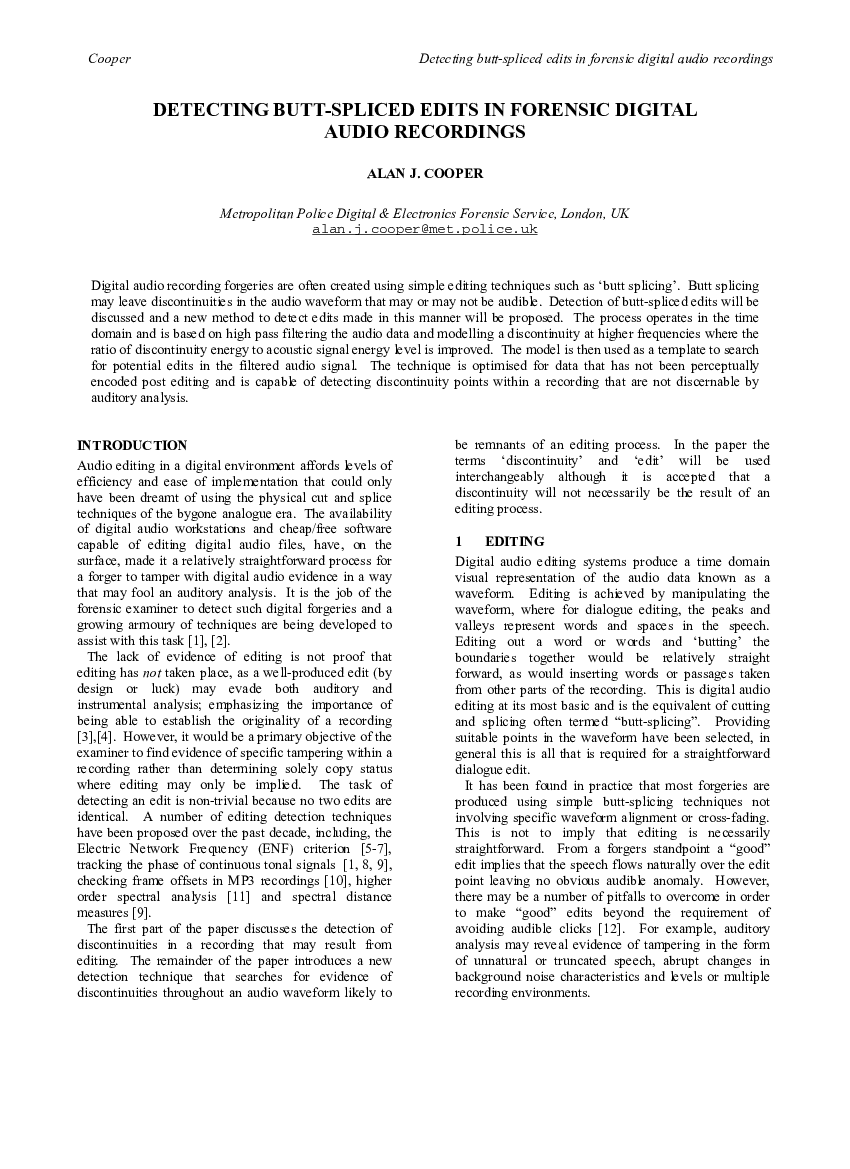Home / Publications / E-library page
You are currently logged in as an
Institutional Subscriber.
If you would like to logout,
please click on the button below.
Home / Publications / E-library page
Only AES members and Institutional Journal Subscribers can download
Digital audio recording forgeries are often created using simple editing techniques such as ‘butt splicing’. Butt splicing may leave discontinuities in the audio waveform that may or may not be audible. Detection of butt-spliced edits will be discussed and a new method to detect edits made in this manner will be proposed. The process operates in the time domain and is based on high pass filtering the audio data and modelling a discontinuity at higher frequencies where the ratio of discontinuity energy to acoustic signal energy level is improved. The model is then used as a template to search for potential edits in the filtered audio signal. The technique is optimised for data that has not been perceptually encoded post editing and is capable of detecting discontinuity points within a recording that are not discernable by auditory analysis.
Author (s): Cooper, Alan J.
Affiliation:
Metropolitan Police Digital & Electronics Forensic Service, London, UK
(See document for exact affiliation information.)
Publication Date:
2010-06-06
Import into BibTeX
Session subject:
Audio Forensics: Authentication - Other Analysis Techniques
Permalink: https://aes2.org/publications/elibrary-page/?id=15484
(3021KB)
Click to purchase paper as a non-member or login as an AES member. If your company or school subscribes to the E-Library then switch to the institutional version. If you are not an AES member Join the AES. If you need to check your member status, login to the Member Portal.

Cooper, Alan J.; 2010; Detecting Butt-Spliced Edits in Forensic Digital Audio Recordings [PDF]; Metropolitan Police Digital & Electronics Forensic Service, London, UK; Paper 1-1; Available from: https://aes2.org/publications/elibrary-page/?id=15484
Cooper, Alan J.; Detecting Butt-Spliced Edits in Forensic Digital Audio Recordings [PDF]; Metropolitan Police Digital & Electronics Forensic Service, London, UK; Paper 1-1; 2010 Available: https://aes2.org/publications/elibrary-page/?id=15484